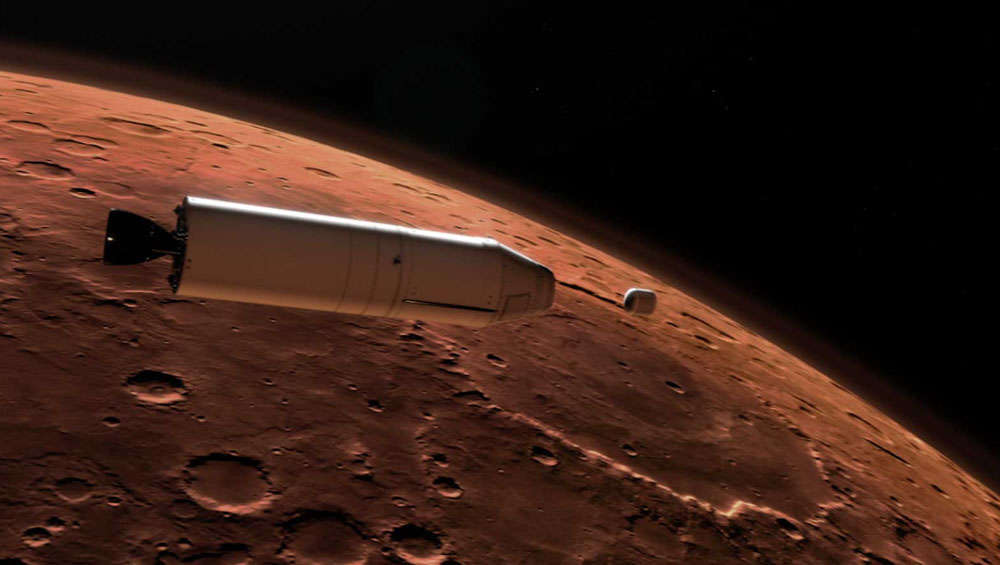Create a free profile to get unlimited access to exclusive videos, sweepstakes, and more!
So now we know how NASA will snag a piece of Mars to bring back to the home planet

No mission has ever brought back stuff from another planet, and no, the Moon doesn’t count…but Mars does.
NASA and Caltech scientists have figured out how they will finally get samples from Mars over here. Perseverance can only do so much — there will need to be a second and third phase of the mission. The rover will leave behind what it found to get picked up later by another spacecraft. Pickup will require two separate missions before a retrieving spacecraft will finally fly the samples back to Earth, and Martian soil will be under a microscope in a lab somewhere on this planet for the first time ever.
As David Bowie keeps asking in his iconic song (which will forever be associated with a certain blue suit), is there "Life on Mars?" The only way we can definitely find out if there is or (more realistically) isn't anything alive on the Red Planet is by searching the alien dust ourselves. While Perseverance can’t sample the entire planet, NASA chose to land it in Jezero Crater for a reason. This impact crater is thought to have filled up with water and possibly been a hot spot for microbes to breed billions of years ago. When Mars lost its atmosphere, liquid water on the surface, and possibly life, went with it.
Another thing that samples from Mars can help us figure out is how it really lost its atmosphere to begin with. Stars can decimate the stuff of atmospheres, and Mars is radiation-bombed now, but what was the reason this planet became so vulnerable to solar winds and radiation in the first place? Fragments of that lost atmosphere thought to have been captured by its moon Phobos can also give an idea of what happened.
Perseverance is expected to land in Jezero crater on Feb. 18. It will touch down along with the Ingenuity helicopter drone that will be the first drone to fly around on another planet. As it crawls around scouring for areas most likely to have once hosted life, scientists will decide which of them appear to be most promising. The rover will then drill for cores of regolith in those areas, seal them, and purposely set them down in what is called a cache. It’s kind of like a “save for later” option for a mission.
But why leave a cache of samples out there when Perseverance has science instruments? The instruments that would be needed to find signs of life were too bulky to ride along with it.
The next two phases of the mission are still pending approval by NASA. If approved, sometime between 2026 and 2028, a Sample Retrieval Lander, planned to be a collaboration between NASA and ESA, will carry a rover and rocket down to Jezero Crater. The rover will go get the cores while the rocket, tentatively called the Mars Ascent Vehicle, waits until the rover returns to load it with a container of samples. This rocket will not return to Earth. Instead, it will launch and send that priceless container floating into an orbit around Mars.
It is the Earth Return Orbiter which will be the only vehicle in this mission to make a round trip. When the orbiter grabs the cache, it will turn around and fly back, so we should have Martian samples on this planet around 2031. That may seem like forever. To scientists who have been trying to get a Mars sample mission off the ground for decades, it isn’t.
"The idea of bringing a sample back from Mars goes back decades," said Ken Farley, the mission’s project scientist, in a press release. "We are in a position now where if everything goes according to plan, samples will be coming back to Earth in 2031. That sounds like a long time, but this becoming a reality has always been 10 years away…Now we are actually doing it."
Will we also be bringing alien microbes, live or fossilized, to Earth? If we do, it might be the best scene that never happened in a sci-fi movie.















